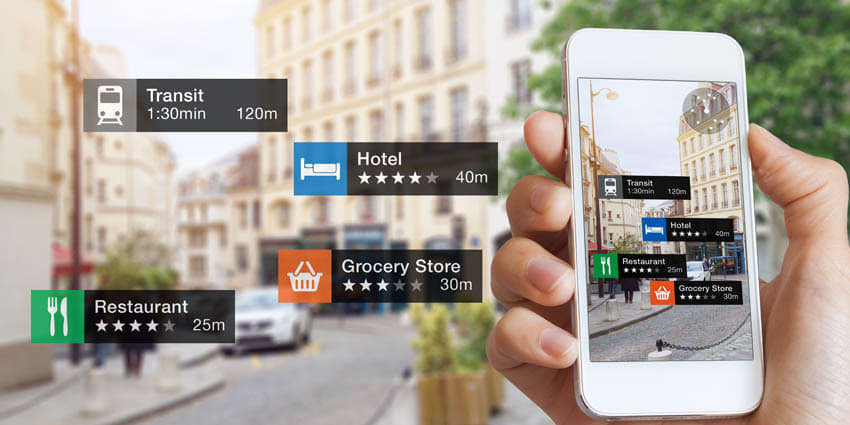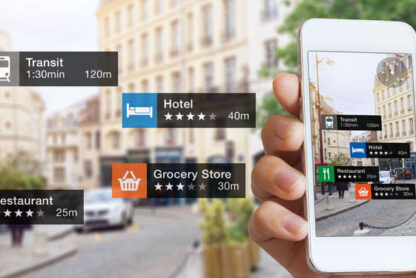Augmented Reality (AR) and Virtual Reality (VR) are two rapidly growing and innovative technologies that are changing the way we experience the world. These technologies offer users new ways to interact with digital content in real-world settings or immerse themselves in entirely new digital worlds. In this article, we’ll explore what AR and VR are, how they work, their applications, challenges, and future potential.
Definition of Augmented Reality (AR) and Virtual Reality (VR):
Augmented Reality (AR) is a technology that overlays digital content onto the real world. AR uses sensors, cameras, and other technology to detect the user’s real-world environment and then enhances it by adding digital content. AR can be used with smartphones, tablets, and specialized AR glasses. Virtual Reality (VR), on the other hand, creates a completely immersive digital environment, simulating a virtual world that users can interact with. VR requires a headset or HMD (head-mounted display) to use.
How Augmented Reality (AR) Works:
AR works by using sensors and cameras to detect the user’s environment and then overlaying digital content onto it. For example, if you were using an AR app to view a product, the app would detect the object and then overlay product information, reviews, or pricing information onto the object in real-time. AR can also use GPS to detect the user’s location and then overlay digital content onto the surrounding area. The technology behind AR is constantly improving, and new advancements are being made all the time.
How Virtual Reality (VR) Works:
VR works by using a headset or HMD (head-mounted display) to create a completely immersive digital environment. The headset tracks the user’s head movements and adjusts the virtual environment accordingly, making it feel like the user is actually in the virtual world. The user can interact with the virtual environment through controllers or hand gestures. VR can also incorporate haptic feedback, providing users with a sense of touch and making the experience even more immersive. The technology behind VR is also rapidly advancing, and new advancements are being made all the time.
Augmented Reality (AR) Applications:
AR has many practical and innovative applications, including gaming, retail, education, healthcare, and tourism. In gaming, AR can be used to create augmented reality games that overlay digital elements onto the real world, such as the popular mobile game Pokemon Go. In retail, AR can be used to allow customers to see how products would look in their homes before they buy them. Education is another area where AR has potential. AR can be used to enhance learning by overlaying digital content on top of physical textbooks or displays, making the learning experience more engaging and interactive. In healthcare, AR can be used to overlay medical information onto patients in real-time, providing doctors with important information about a patient’s condition. In tourism, AR can be used to provide users with information about landmarks, museums, or other attractions in real-time.
Virtual Reality (VR) Applications:
VR has many exciting applications across various industries. One of the most prominent industries for VR is gaming, where immersive VR games provide a completely new level of entertainment. VR gaming allows players to be fully immersed in a game world and interact with it in ways not possible with traditional gaming. VR can also be used for training simulations, such as flight simulators for pilots, medical simulators for doctors, and military simulations for soldiers. In architecture and engineering, VR can be used to create 3D models and simulations of buildings and infrastructure to assist in the design process. In addition to these practical applications, VR is also used for entertainment, such as concerts, virtual travel experiences, and movies.
Challenges of AR and VR:
Despite the many advantages and benefits of AR and VR, there are still some challenges that need to be overcome. One of the biggest challenges facing AR is the need for high-quality cameras and sensors to accurately capture the user’s environment. Additionally, AR requires a lot of processing power to overlay digital content onto the real world, which can be a challenge for lower-end devices. VR faces a different set of challenges, such as the need for powerful hardware to run the VR experience. VR headsets require a high level of graphics processing power and fast refresh rates to maintain immersion, which can be expensive for consumers. VR also has the potential to cause motion sickness in some users, which can limit its adoption.
Future Potential of AR and VR:
Despite the challenges facing AR and VR, both technologies have enormous potential for the future. In the next few years, we can expect to see a significant increase in the adoption of AR and VR, as hardware improves and becomes more affordable. AR and VR have the potential to revolutionize many industries, from healthcare to retail. In healthcare, AR and VR can be used to provide virtual consultations, remote surgery, and medical training simulations. In retail, AR and VR can be used to enhance the customer experience by allowing customers to try on clothes or see products in their homes before purchasing. In the future, we may also see more hybrid technologies that combine AR and VR to create even more immersive experiences.
Conclusion:
AR and VR are two innovative technologies that are changing the way we interact with the world. AR overlays digital content onto the real world, while VR creates a completely immersive digital environment. Both technologies have practical applications in various industries, including gaming, education, healthcare, and retail. While there are still some challenges that need to be overcome, the future potential of AR and VR is enormous. As hardware improves and becomes more affordable, we can expect to see a significant increase in the adoption of AR and VR, and new applications and use cases will emerge. AR and VR are exciting technologies that are poised to revolutionize many aspects of our lives, and we can’t wait to see what the future holds for them.



